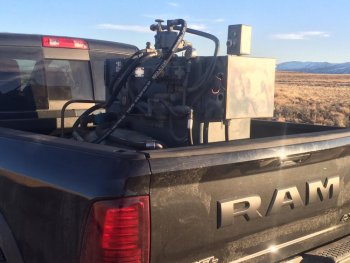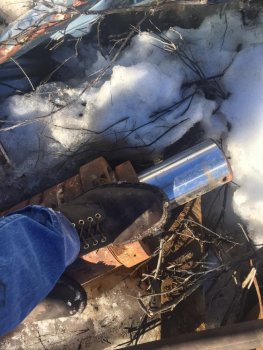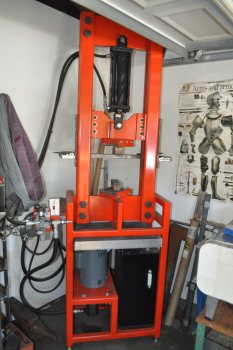There are a couple of reasons I prefer a "C" frame..... 1st, they are much more compact, with a much smaller footprint then a similar tonnage "H" frame. 2nd, I find it much easier to work in/around a "C" frame. If controls are thought through and setup correctly, you have at least 180 degree area you can work from. With the "H" frame, you could possibly work from 2 directions, but its very impractical considering how "H" frame presses are constructed.
The two most important things I think are a MUST with ANY forging press build......AT LEAST a 6" diameter cylinder, and I honestly believe you cannot "overbuild" a forging press. The cylinder diameter is crucial to keep line pressures within tolerable ranges. I know there are a lot of folks out there who have built forging presses with 5" and even 4" diameter cylinders, but its just plain.....a very bad idea. Most commercially available hydraulic lines are rated at 3000psi burst strength...... the smaller the cylinder diameter, the higher pressure required for a given tonnage. If you've never experienced a hydraulic leak.....even a pin hole in a line under pressure can cut you in half like a light saber!

If you've never built or used a forging press, its impossible to describe the incredible forces you're dealing with. However "heavy duty" you think you need to build it.....DOUBLE IT! I don't say any of that to scare you, just to try to give you some idea of what you're dealing with.
Personally, I do not recommend a press of more then about 24-25 tons for anyone who is not well experienced in using forging presses. "Orange Crush" weighs in a just a tad over 3,000lbs, and put out 80 tons...... and if you don't know/understand what you're doing with it...it WILL hurt you. As to durability, I know eventually its going to require major repair. Watch closely in the video, and you will see the top flexing.....that top is 14" "I" beam, filled in with 1/2" plate, and 1/2" gusset plates on the outsides. The die plates (holders for the dies) are 1" thick, and the press can easily warp those if used incorrectly. I use A36 hot roll for dies, simply because I know I'm gong to be changing them every few months. It does no good to try to use anything else such as a tool or Die steel.....the heat a duration will temper them out quickly, and they will "squash" the same as A36 does.
Many people have asked me if I could only have one, which would I go with....the air hammer or the press...... personally, having used both, I couldn't do without either. I consider the press my "precision", and the air hammer is my "speed". There are so many tasks that I can do on each, that the other either won't do, or does poorly..... both are important parts of what I do, and how I do it.




